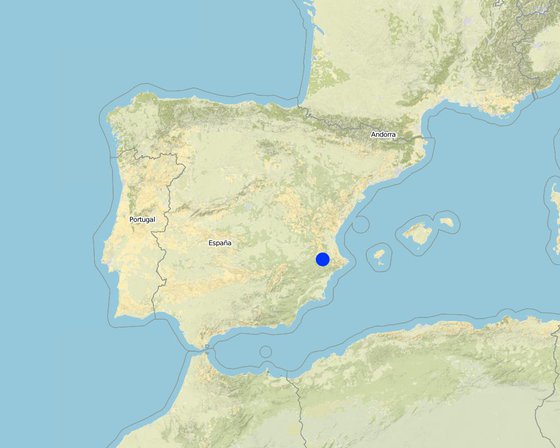

In Vineyard area from Valencia (south-east Spain), the research team of the University of Valencia set up an experiment in order to test the effectiveness of non-tillage in order to keep high soil moisture levels and decrease soil water erosion.
Purpose of the Technology: The increase in ground cover that keep intact the soil structure, enhances soil superficial properties and improve water infiltration and reduces runoff and soil losses.
Establishment / maintenance activities and inputs: No-tillage. Clearing annual grasses twice per year on peak growing season.
Natural / human environment: The landscape reflects the long history of management where several constructions related with wine production depicted its importance on this region. Since the late 1960´s, chemical agriculture by use of fertilizers and herbicides, and new vineyards plantations seasonally leave the soil surface bare, triggering huge erosion rates.

الموقع: Valencia, Spain, إسبانيا
عدد مواقع تنفيذ التقنيةالتي تم تحليلها:
انتشار التقنية:
تاريخ التنفيذ:
نوع التقديم





المواصفات الفنيةMain technical functions: improvement of ground cover, increase of surface roughness, increase in organic matter, increase of infiltration, increase / maintain water stored in soil, sediment retention / trapping, sediment harvesting
Secondary technical functions: control of raindrop splash, control of dispersed runoff: retain / trap, control of dispersed runoff: impede / retard, control of concentrated runoff: retain / trap, control of concentrated runoff: impede / retard, control of concentrated runoff: drain / divert, reduction of slope angle, reduction of slope length, improvement of surface structure (crusting, sealing), improvement of topsoil structure (compaction), improvement of subsoil structure (hardpan), stabilisation of soil (eg by tree roots against land slides), increase in nutrient availability (supply, recycling,…), increase of groundwater level / recharge of groundwater, water harvesting / increase water supply, water spreading, improvement of water quality, buffering / filtering water, reduction in wind speed, increase of biomass (quantity), promotion of vegetation species and varieties (quality, eg palatable fodder), control of fires, reduction of dry material (fuel for wildfires), spatial arrangement and diversification of land use Retaining more vegetation cover Material/ species: non-tillage keep annual grasses cover Mulching Material/ species: non-tillage and clearing keep soil covered Change of land use practices / intensity level: The non-tillage implies a change of land use practices. Soil structure won't be broken and soil biopores keep connected |
|||||||||||